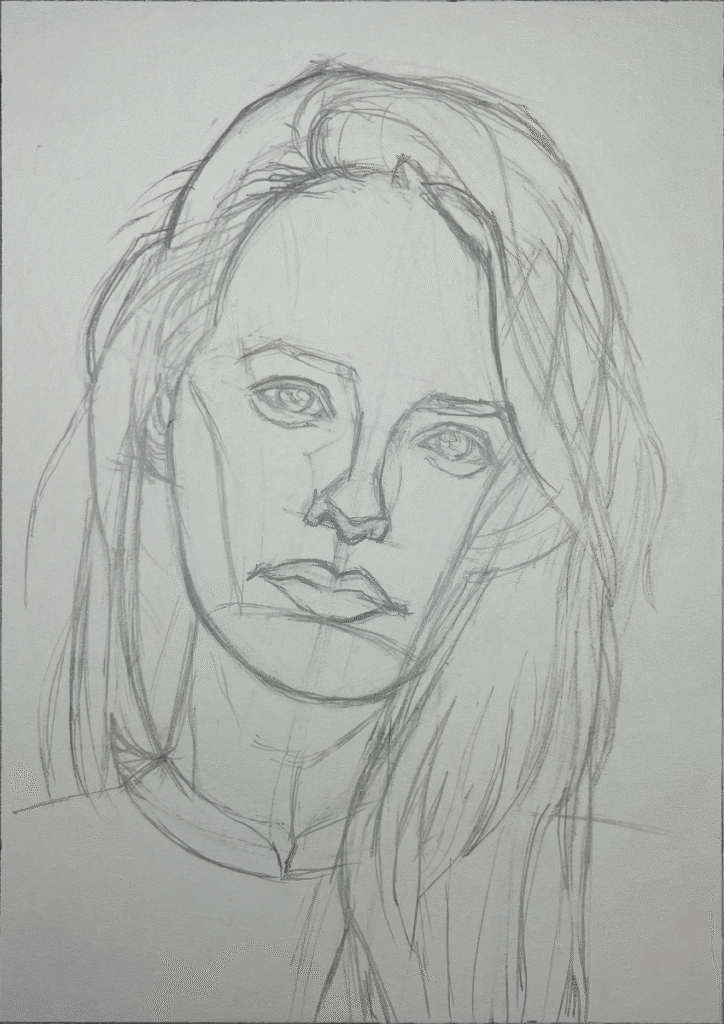Line Drawing
Reference Image

I’ve chosen a soft-lit full view portrait this time to draw.
Abstraction

I begin with the oval. I mark the center of the face vertically, horizontally. I mark where the eyes will go, and I mark the nose, and mouth.
This time, I’m also putting the hair in abstractly early on . I want to make sure it will fit in the format I’ve chosen – that is, I don’t want it getting cut off because I drew everything else too big.
Developing the Drawing

I draw in the eyes, put in the eyebrows, I draw in the nose, and I draw in the lips. I block in their basic shapes then contour them at each step.
Here you’ll notice I put in certain planes of the face. That would be the cheeks, the temples, the chin. I even draw in the parts that will be covered over by the model’s hair. If I want a good feel for the form this is what I do.

Next, I block in the various forms of the hair. I keep the hair toward simple shapes. I look for the largest shapes I can find in the reference, draw them in, and only imply detail.
I will admit that in the past I’ve had the issue of trying to draw the hair too tightly to what it looks like in the reference, and I’m trying to break that habit.
Finishing the Line Drawing

I continue to correct the drawing. Where something looks to compressed (squished together), I erase and redraw it wider. I do the opposite if there’s something that looks too wide – I make it narrower.
I clean up the lines carefully with white erasers, reestablishing any lines that get lost.
After that, I roll the drawing with a kneaded eraser, preparing it for shading.

This is an interesting explanation of the portrait drawing process. Starting with the oval and mapping out the features seems like a great way to ensure balance and proportion. The focus on abstract shapes for the hair and simplifying details is a smart approach to avoid overcomplicating the artwork. I like how the artist emphasizes correcting and refining the drawing at each step. Why do you think the artist prioritizes blocking in larger shapes before adding finer details?
For me, Finance, it’s a matter of making sure all of the broad proportions are correct before moving on to details.
Long ago before I had a good process, then maybe I would go straight to details, but then, I’d find that maybe I make something stretch out here, make something else too narrow, or otherwise go wildly out of proportion.
Having an abstraction to start gives you a good framework to make sure things like that don’t happen while you’re drawing on details.